A Marshall McLuhan expert annotates the Google Doodle honoring the internet visionary
For journalism students at New York’s Fordham University, the shadow of Marshall McLuhan looms large. A media theorist and digital visionary, McLuhan taught at Fordham during its 1967-68 academic year, overseeing an alternative curriculum of lectures, film screenings, and independent study. His philosophies still inform the school’s journalism program, and why wouldn’t they? McLuhan effectively predicted the internet 35 years before it was a thing.


For journalism students at New York’s Fordham University, the shadow of Marshall McLuhan looms large. A media theorist and digital visionary, McLuhan taught at Fordham during its 1967-68 academic year, overseeing an alternative curriculum of lectures, film screenings, and independent study. His philosophies still inform the school’s journalism program, and why wouldn’t they? McLuhan effectively predicted the internet 35 years before it was a thing.
Today (July 21) Google honored what would have been McLuhan’s 106th birthday with a Doodle highlighting his ideas about the evolution of media. During McLuhan’s heyday, those ideas could be hard to grasp: “There were times when I couldn’t understand a word he said,” recalled Anthony Perrotto (Fordham class of ’69) during a 2011 luncheon that brought together a group of McLuhan’s former students to recognize what would have been his 100th year (McLuhan died in 1980). Still, history has proven McLuhan eerily prescient: He predicted an age characterized by people forming communities through technology (dubbed the “global village”) and posited that the method of communication would become more influential than the information itself (“the medium is the message”).
It was Fordham’s emphasis on McLuhan that actually fostered my own love of digital media (“You found out where journalism is going,” a ’56 alum told me when I won a scholarship in 2006. “This new medium of the internet.”) Ever the faithful alumnus, I reached out to Paul Levinson, professor of communication and media studies at Fordham, and author of dozens of books and articles on McLuhan, including Digital McLuhan and McLuhan in an Age of Social Media. I asked Levinson to break down Google’s Doodle, which he says “captures McLuhan’s thinking about the evolution of media perfectly,” frame by frame:

“Frame 1 shows the origin of humanity, communicating around the fire in prehistoric times, by the only medium available at that time: speech. Word of mouth was and continues to be our most fundamental mode of discourse. McLuhan referred to this as the ‘acoustic mode.’
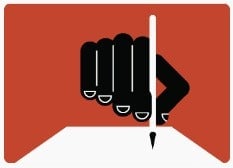
“Frame 2 shows a civilization-making game change: writing. With the written word, ideas of any kind can be communicated without the creator of the ideas present. You can even communicate about things that have no physical existence—abstractions, such as freedom and love. Democracy, science, and of course written history all owe their origins to the written word. McLuhan called this the ‘visual mode.’
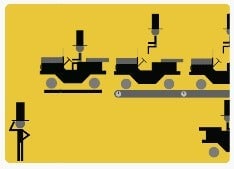
“Frame 3 shows the height of written civilization: the invention of the automobile, produced on the assembly line. In this part of our history, both speech and writing were enhanced by transportation. McLuhan looked at transportation as, in effect, another kind of communication, or an amplifier of media. In the case of the car, its interchangeable parts were the physical equivalent of the visual letters of the alphabet, and the way they can be put together to make different words.
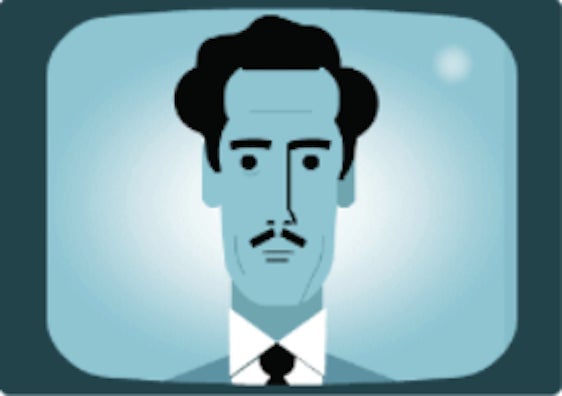
“Figure 4 of course shows television. McLuhan correctly pointed out that, although we watch television, it’s actually an acoustic medium more than a visual medium. Everyone who watches the same channel on television sees the same thing at the same time, just as is the case when everyone listens to one person talking. This is unlike the written word in a book or even in a newspaper, which is read at different times by each person reading. When McLuhan said electronic media are turning the world into a global village, he was referring to everyone watching the same thing on television at the same time, just as people who are gathered around a speaker in the village square would all hear the speaker at the same time.
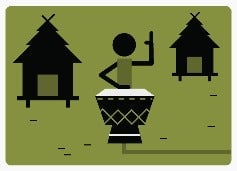
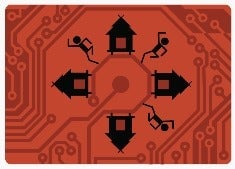
“And finally, Figures 5 and 6 should be taken as a couplet: McLuhan’s global village was not only about television but, presciently, about the internet. The television global village was actually incomplete in two ways: It was national, not global (there was no international television in the 1960s when McLuhan came up with this term), and the communication was one-way—unlike a village, in which everyone can be both a sender and a receiver of information, the television audience can only receive information. But the internet has changed all of that: It was truly global, and anyone on Twitter, Facebook, YouTube, Instagram, and Snapchat can just as easily create and send content as receive it. The people at Google are keenly aware that McLuhan foresaw their very existence, which is why they devoted this day to bringing word of his thinking to the world at large via this Doodle.”